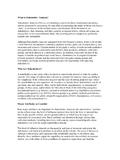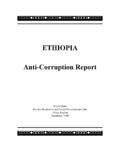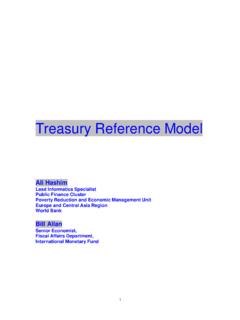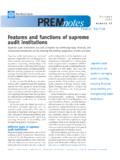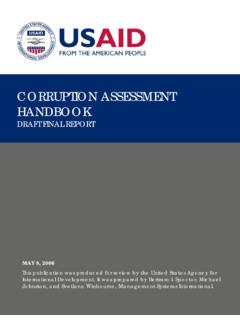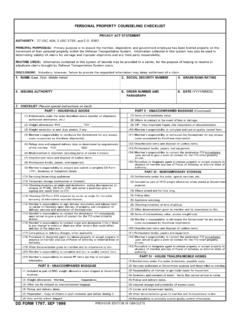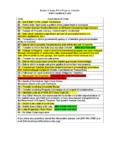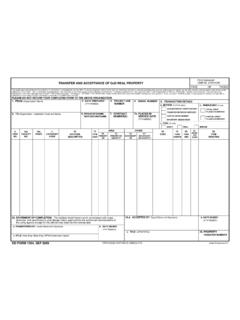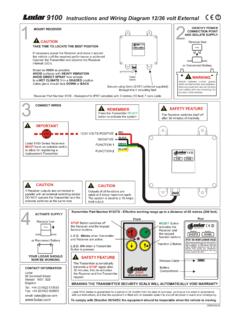Transcription of Land and Property Taxation Final - World Bank
1 land and Property Taxation : A Review By Richard M. Bird and Enid Slack March 2002 1 Contents I. Introduction II. The Role of the Property Tax 1. As a Source of Revenue 2. As a Local Tax III. Taxes on land and Property : A Survey 1. What is Taxed? land vs. land and improvements Exemptions 2. How is it Taxed? Area-based assessment Market value assessment Rental value assessment Area-based vs. market-based assessment Self assessment 3. At What Rate? Who determines the tax rate? Differentiated tax rates The level of tax rates 4.
2 Some Special Cases Owner-occupied residences Non-residential Property Agricultural land and Property 5. Property Tax Administration Property identification Assessments and appeals Tax collection and arrears 6. Other Taxes on land IV. Lessons from Experience with Property Tax Reform 1. Reasons for Reform 2. Nature of Reform 3. Preconditions for Reform 4. Impact of Reform V. Conclusions 1. Financing Local Governments 2. Impact on land Use References 2 land and Property Taxation Around the World : A Review I. Introduction Following this brief introduction, Part II of this paper sets out briefly the rationale for taxing land and Property , both as a source of local government revenue and in terms of its effects on efficient land use.
3 Taxes on land and Property have both fiscal and non-fiscal effects. The revenue such taxes produce is often an important source of finance for local governments. The extent to which those governments have control over Property taxes is thus often an important determinant of the extent to which they are able to make autonomous expenditure decisions. The level, design, and control of Property Taxation are thus, in many countries, critical elements in effective decentralization policy. But Property taxes are not always local taxes, and whether they are or are not local, like all taxes they must also be considered from a more general policy perspective.
4 From this perspective, Property taxes may be viewed, depending upon one s assumptions, the environment in which they are applied, and their design and effectiveness, as an equitable and efficient way of raising revenue or they may be considered to be a regressive and undesirable form of public finance. Simple, general conclusions on these important issues do not emerge easily from an examination of the complex structure of Property taxes around the World . As an example, consider Germany, in which two variants of land tax are imposed on (in effect) four different bases at five different base rates which in turn are modified by locally-determined leverage factors.
5 1 Other than noting that the revenues from this complex set of taxes are small and that reform has proved politically impossible so far, it is hard to say anything very definite about the effects of such a system. Germany is not alone in this respect. In most countries, taxes on land and Property are among the oldest forms of all taxes. Old taxes need not necessarily be good taxes, as the saying has it, but they almost invariably have, over the years, become encrusted with various peculiar features that prove very difficult to alter. This point is made clear by the 25 case studies prepared as part of this study and presented in the annexed report entitled land Taxation in Practice: Selected Case Studies.
6 Part III, the main section of this paper, summarizes some of the major findings of these reviews of the Taxation of land and Property in 25 countries (five in each of five regions OECD, central and eastern Europe, Asia, Africa, and Latin America). The focus of this review is on the potential contributions of the Property tax to the revenues of urban and 1 See the section on Germany in the accompanying document, Richard M. Bird and Enid Slack, eds., land Taxation in Practice: Selected Case Studies, Toronto, March 2002.
7 Unless otherwise cited, all references to specific country experience in the present paper are based on material in this study. 3rural governments and to more efficient land use. Since the ability of the Property tax to make these contributions largely depends upon the characteristics of the tax (tax base, tax rates, and administration), this section of the paper reviews the information collected on these characteristics in the 25 case study countries. In addition, such other land -based taxes as land transfer taxes and development charges are discussed briefly.
8 Part IV of the paper contains a brief review of the experience with reform of the Property tax in five countries (one in each of the five regions), again drawing heavily on the case studies in the annex. Finally, the concluding Part V of the paper summarizes briefly the extent to which land taxes can contribute to local government revenues and to more efficient land use, noting that different forms and levels of land and Property Taxation are likely to prove suitable in different environments. It has been said that one size never fits all in fiscal design, and with respect to no tax does this saying seem truer than with respect to this oldest form of Taxation .
9 As noted above, this general report is accompanied by an extensive annex entitled land Taxation in Practice: Selected Case Studies containing the 25 case studies that constitute the main raw material utilized in the report. The countries covered in these case studies were selected to cover most regions of the World and also, to some extent to depict different styles or practices in taxing land and real Property . Although the sample chosen is not representative in any statistical sense, and the information obtained is in any case too diverse and disparate to lend itself to statistical manipulation, many of the conclusions reached on the basis of this study emerge also from the earlier cross-country studies noted below.
10 For example, the diversity in the application of land and Property taxes among these 25 countries is evident: there are differences in the determination of the tax base, the setting of tax rates, and the ability to levy and collect the tax. In some countries, one Property tax covers all types of Property . In others, there are different taxes for different components of real Property . Countries may, for example, have separate taxes on land and buildings; separate taxes on residential and non-residential Property ; or separate taxes in urban and rural areas.
